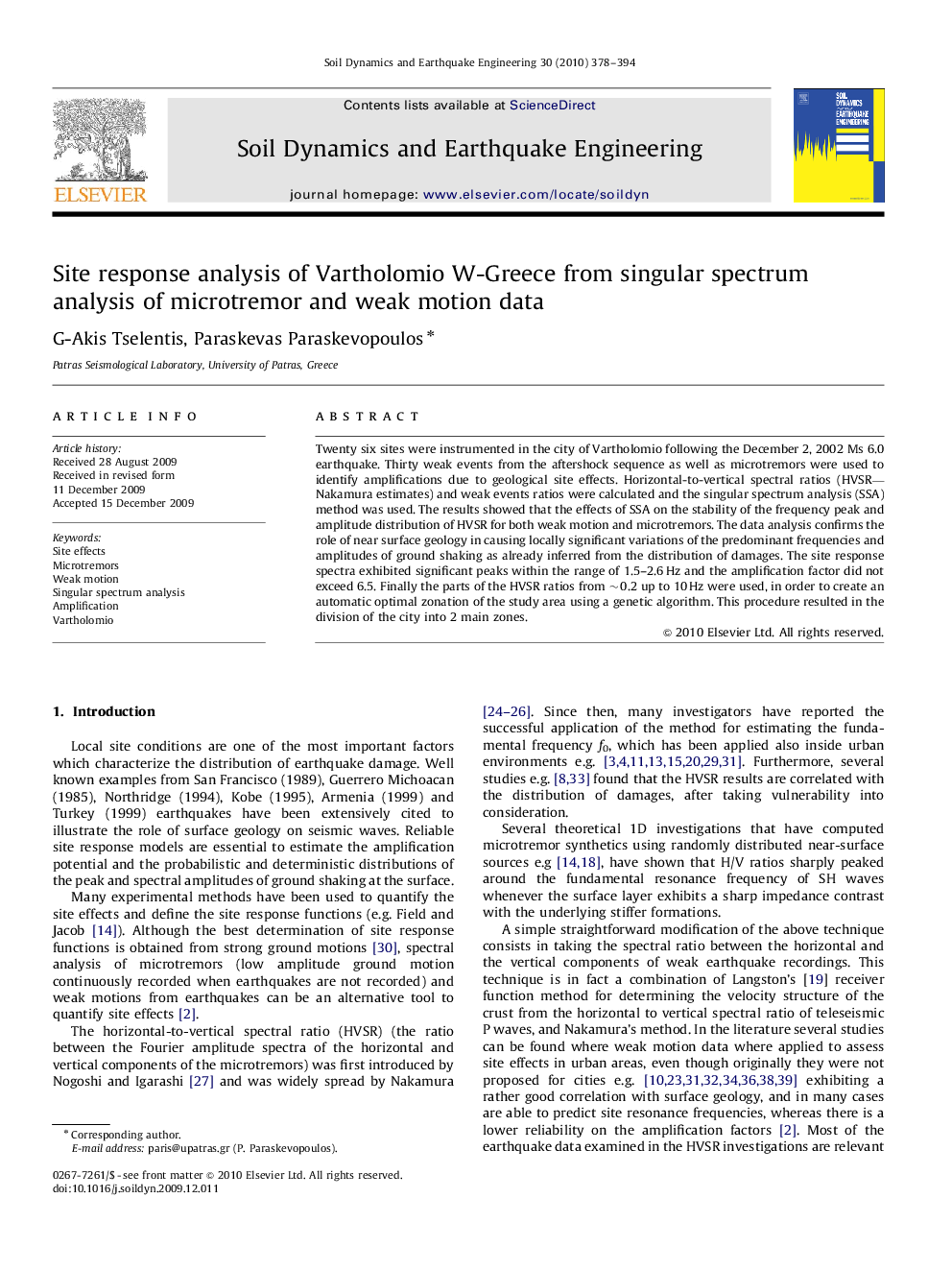| Article ID | Journal | Published Year | Pages | File Type |
|---|---|---|---|---|
| 304807 | Soil Dynamics and Earthquake Engineering | 2010 | 17 Pages |
Twenty six sites were instrumented in the city of Vartholomio following the December 2, 2002 Ms 6.0 earthquake. Thirty weak events from the aftershock sequence as well as microtremors were used to identify amplifications due to geological site effects. Horizontal-to-vertical spectral ratios (HVSR—Nakamura estimates) and weak events ratios were calculated and the singular spectrum analysis (SSA) method was used. The results showed that the effects of SSA on the stability of the frequency peak and amplitude distribution of HVSR for both weak motion and microtremors. The data analysis confirms the role of near surface geology in causing locally significant variations of the predominant frequencies and amplitudes of ground shaking as already inferred from the distribution of damages. The site response spectra exhibited significant peaks within the range of 1.5–2.6 Hz and the amplification factor did not exceed 6.5. Finally the parts of the HVSR ratios from ∼0.2 up to 10 Hz were used, in order to create an automatic optimal zonation of the study area using a genetic algorithm. This procedure resulted in the division of the city into 2 main zones.
